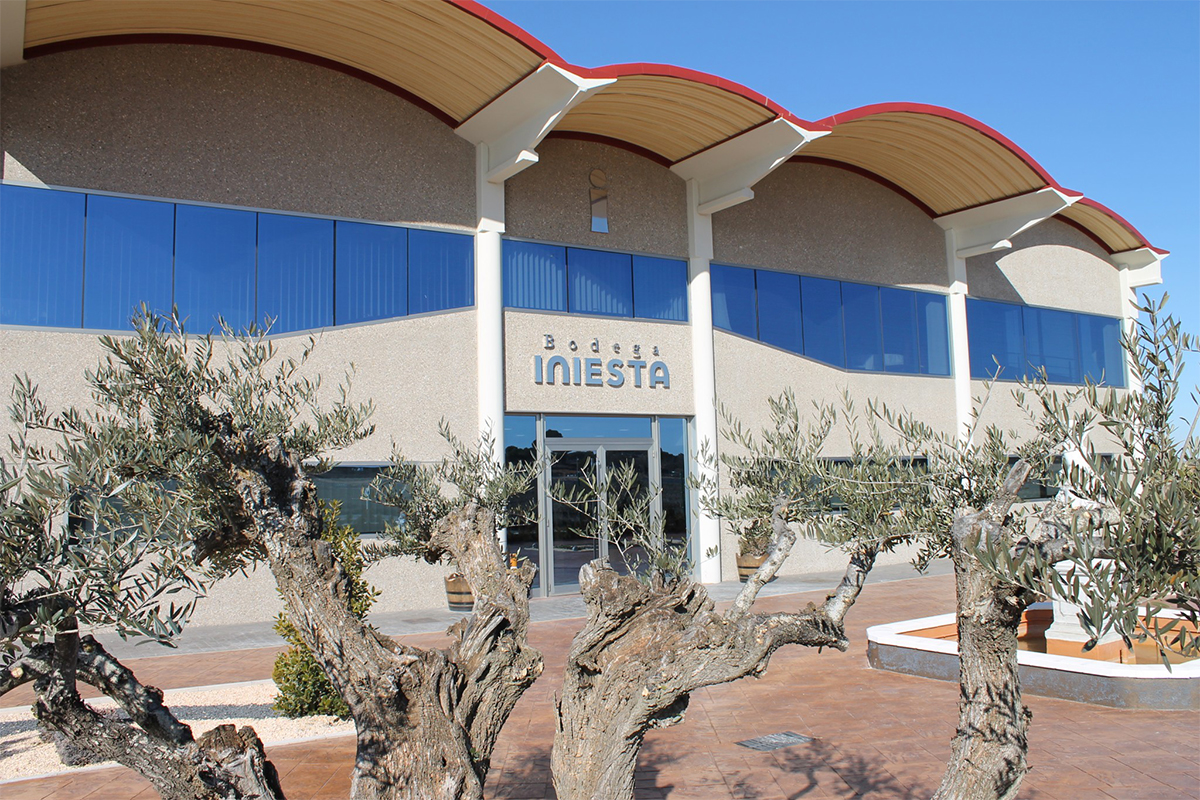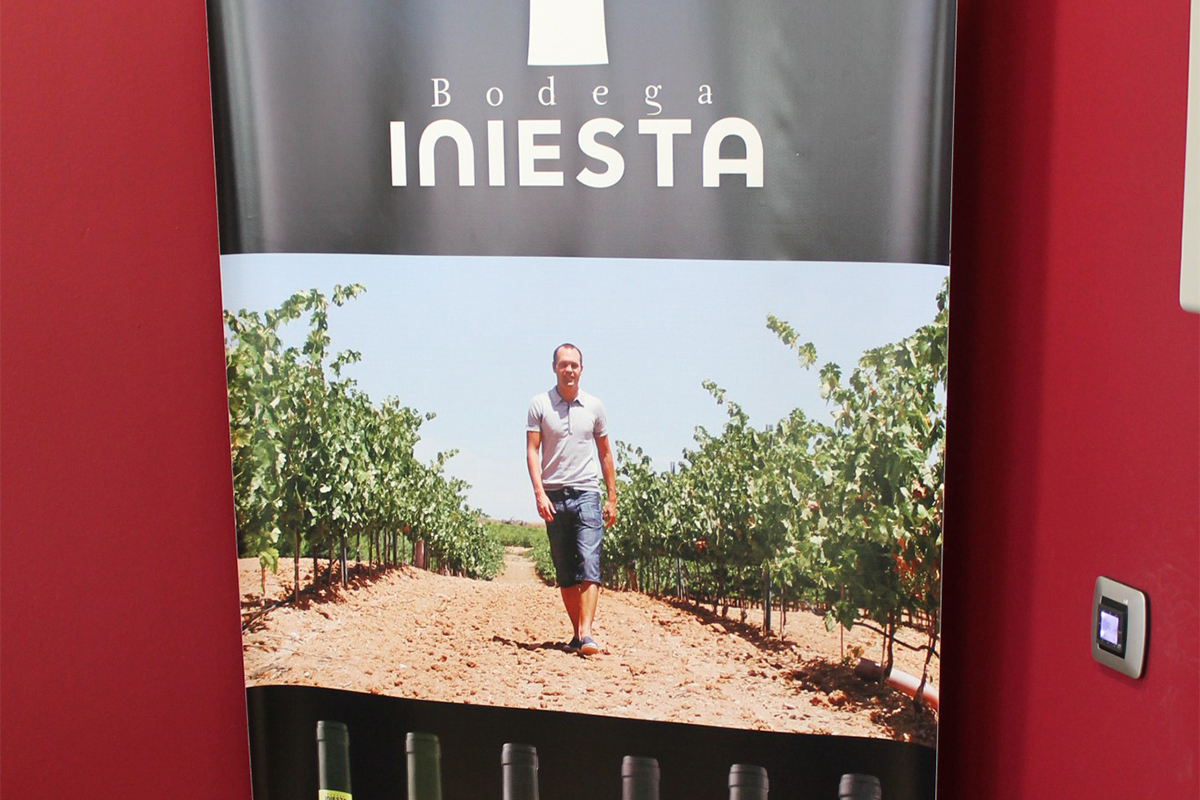15 enero, 2025

Colin Harkness
Bear with me through this important (I promise) introduction – this is January’s Colin Harkness Roving Wine Report, though it may not seem like it!
I’m sure, that as parents, we’ve all played the role of taxi driver for our children. When ‘I were a lad up in t’North’ cars were far fewer than they are now. When about 10 years old my Dad took me to a bike shop and bought me a second hand ‘Harry Quinn’ racing bike telling me that this was how I was going to get to school and, as got I older, to everywhere else I wanted to go. It became my pride and joy as well as my only means of transport.
Times have changed dramatically, of course, and the ‘school run’ has become an established ‘thing’ twice daily clogging up the roads approaching all the schools of the UK. How different are these roads outside of school hours and during holiday times! However, I guess (I’m not sure now, having moved to Spain) there is still a fair amount of traffic around them on Saturday mornings!
Sports fixtures, choir, orchestra, drama, extra art and a whole plethora of other activities mean that parents make the same trip. These taxi runs also occur out of school. We parents are always keen to introduce our children to various activities – all of the above and more, and therefore we go searching for clubs, societies, associations etc offering them whichever takes their, and our, fancy. We like our kids to try these activities initially to give them interests outside of school, outside of the home; to see which they enjoy, as well as for social education, making new friends etc.
Often a child will show interest as well as ability in one of the activities. This will mean selection for matches, concerts, competitions, gradings, gymkhanas, exhibitions and so on – therefore more taxiing! Sometimes a child will show particular promise which may mean further training, coaching and always, more miles on the car’s clock!
Occasionally a rare talent will be discovered, a child who is outstanding in whichever activity they’d chosen (sometimes even, more than one activity, causing some anxiety in later having to make a choice!).
From a sports perspective I’ve had plenty of experience of this, as a parent, but also from the coaching side of things – specifically in football. A not too successful player, I was a decent coach, running school teams, and representative teams. I was headhunted by Liverpool FC and asked to scout junior footballers with potential. What a brilliant stroke of luck to get the job, but also, a while later, to receive a tip-off about a certain 10 years old boy playing football – Michael Owen.
We signed Michael and I’ve been delighted to see his rise in professional football and now in the media. During this time (and at last to the point of my article this month) I was very aware of the sacrifices his parents willingly made to take him to all the coaching, training, matches, trials etc. So, I understand exactly what Señor José Antonio Iniesta and his family must have gone through in the formative years of one of the world’s best footballers, Spanish International, Andrés Iniesta.

Andrés’ father worked the vineyards, mostly with horse, plough and cart, of the local landowner in the small village Fuentealbilla, not far from the city of Albacete. Papa took him everywhere, including, eventually to the mecca (well maybe equal mecca?!) of Camp Nou, Barcelona CF, for trials! A dream they’d all shared from Andrés’ very young childhood was about to come true.
An unassuming, humble, gentlemanly footballer (words not often seen together these days?), it doesn’t surprise me at all that on signing for Barça and having received his considerable signing on fee, Andrés went back to Fuentealbilla, approached the man for whom his dad had been working, and bought the land, the finca and the winery, with a view to repaying in some way for all the taxiing, the costs and the privations they must have suffered a little in order to put Andrés in such an enviable position. Without a huge ceremony, something not at all in Andrés’ style, he gifted it to Papa as his, thus allowing him to make his own wines – another of Señor Iniesta’s passions, extra to football.

Bodega Iniesta, DO Manchuela was born!
The modern winery was built, designed with the idea of producing fine but affordable wine. Head Wine Maker was appointed, local staff were engaged and yours truly visited in 2012, when it was just two years old. If you have the chance, it’s very well worth a trip for a tour and tasting which can be arranged by contacting the bodega, www.bodegainiesta.es , where you’ll see a number of very attractive looking packages.
I remember I got on with the winemaker like a barrel on fire as he was delighted to meet an English journalist, the first at the time, a ‘catador’ with, of course, an interest and knowledge of wine as well as a passion for it too! We tasted several wines at various stages of their development in barricas and stainless-steel tanks. I was asked my opinion whilst being told what he was trying to achieve with each different wine. Fascinating, but in fact we didn’t have time to taste any of the finished products in bottle. A small problem easily solved – the following week I received a case, ready for tasting!
I was impressed then with such a young, almost nascent bodega producing good wines with potential too. I recently saw an article about Andrés retiring (I think) from playing professionally, in Japan, in fact, and it reminded me of those wines. I contacted the winery and as swiftly as twelve years ago some samples arrived on my doorstep!
When you look at the website above, you’ll also see a list of the wines they are currently selling (actually, at the time of writing, there are some very attractive looking offers on too!) It’s an impressive portfolio which includes sparkling wines and has several different categories, from entry level though to their top wine.
Corazon Loco Blanco is a white wine made from Verdejo blended with Sauvignon Blanc. It’s an interesting mix, considering that at a blind tasting if you were presented with a Verdejo, but obviously didn’t know it, you’d likely be thinking it might be a Sauvignon Blanc, but perhaps from a colder climate than the New Zealand SBs which are so prevalent in the UK right now. So, blending SB with Verdejo is like having a cool climate Sauvignon Blanc, and some!
There are the kiwi, grassy, gooseberry notes we would expect from an NZ SB (the latter quite faint), with some extra back up vegetal aroma and flavour including the spritz smelt when a green pepper is sliced. The wine is fresh, balanced and is a good aperitif wine as well as for simply drinking on its own, with the Verdejo element making it especially suited to salads and many vegetarian dishes. A good start.
I’ve said many times that I’m not one of those people who thinks that, a) Rosé wine is a girls drink (I wouldn’t dare with wife Claire-Marie Soprano and daughter Rosanna in the house!); and, b) that rosado is just for Spring and Summer. Yes, like many of us here in Spain, I do like the refreshing element of rosado when the sun shines and the temperatures climb and we probably do drink more in the hotter months, but I also like rosado the rest of the year too. If not yet converted, try rosado in Autumn with vegetable based dishes, fish and seafood as well and then look for it in Winter when choosing a similarly coloured fish – trout, salmon and so on. It works, believe me.
At the end of Autumn, beginning of winter recently I enjoyed the entry level Bodegas Iniesta Corazon Loco Rosado Bobal. (While I’m here I’d also like to point out that these wines are made under the DO Manchuela flag – a Denominación de Origen not so easily found but well worth the hunt). Made with Bobal, it’s not long left with the skins accounting for the very pale á la mode colour. Pretty in the glass, with a nice red rose bright cherry aroma and flavour with some soft red fruits too.
The final wine I tasted (but it won’t be the last Iniesta wine we have for sure) was the impressive Corazón Loco Selección 2017 an eclectic blend of Syrah, Petit Verdot, Tempranillo and Cabernet Sauvignon. This wine is drinking perfectly now and at the time of writing is half price at just 4.75€ – now that’s a bargain! It’s enjoyed it’s twelve months in oak, American and French and the winemaker has done his job well. The blend of fruit along with the background oak support make this a full flavoured wine though not too weighty on the palate.
It’s the avowed aim of the winery to make wines for the people at prices we can afford. It’s no wonder therefore that this intention along with the history behind the bodega and its most famous son, promoted the villagers to erect a huge poster as you enter the town, ‘Iniesta Siempre Contigo’!
————————————————————————————————————————————-
Colin Harkness is a Member of the Circle of Wine Writers, a Features Journalist and a Radio Broadcaster.
Facebook: Colin Harkness
Instagram: @colinharkness53
X (Twitter) @colinonwine
Se advierte al usuario del uso de cookies propias y de terceros de personalización y de análisis al navegar por esta página web para mejorar nuestros servicios y recopilar información estrictamente estadística de la navegación en nuestro sitio web.
0 comentarios en